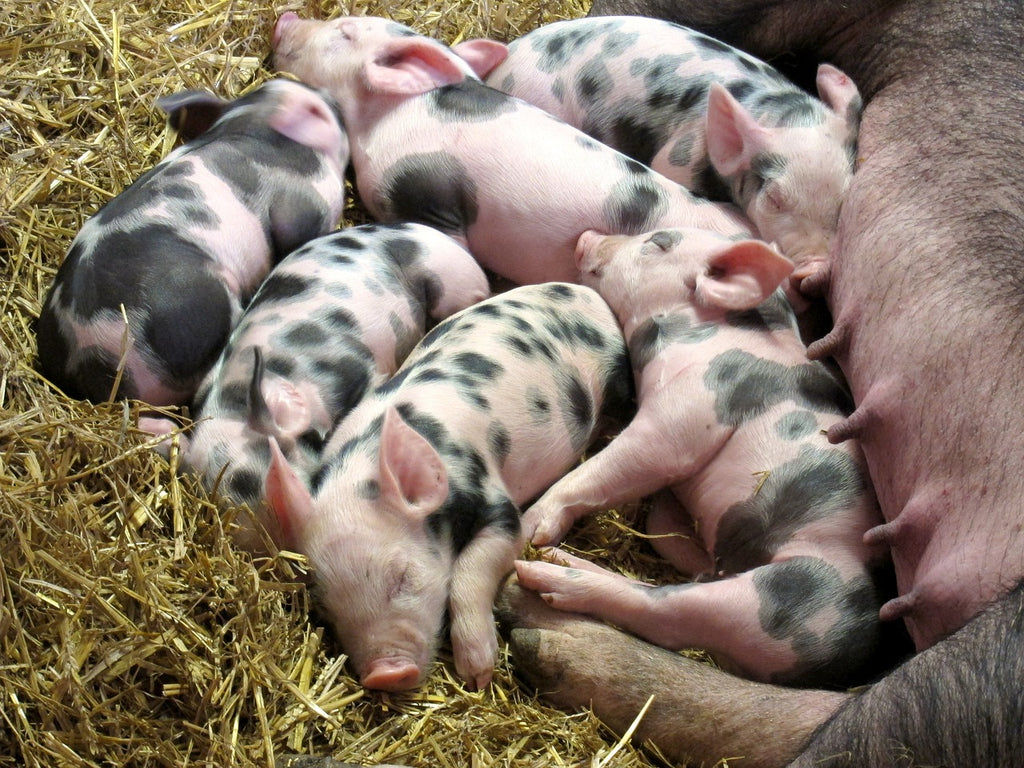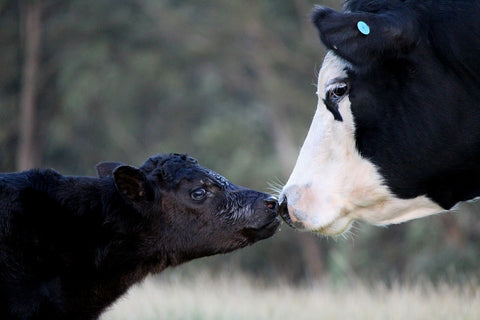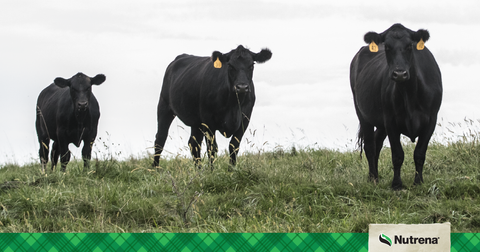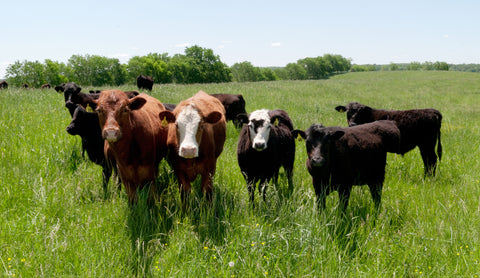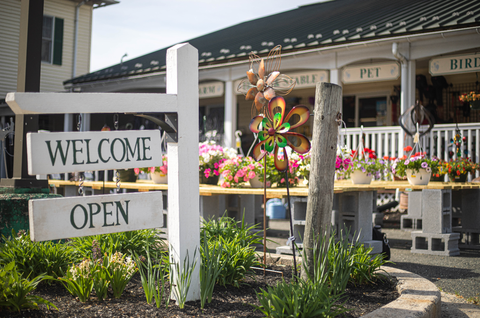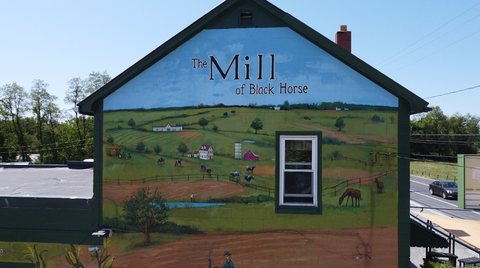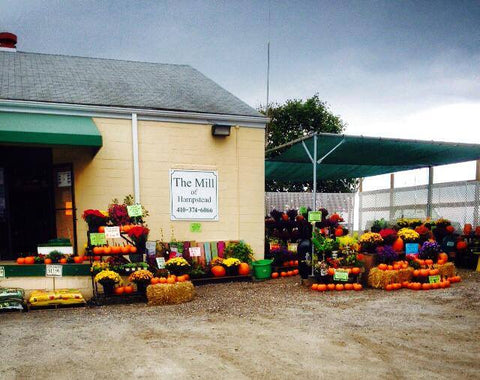The anticipation of newborn livestock on the farm is an occasion that brings new life, growth, and promise for the future. Proper preparation is essential to ensure a smooth and healthy start for both the newborns and their mothers. Here are some considerations to prepare for newborns on your farm that are helpful if you are new to birthing livestock.

1. Nutrition for Pregnant Mothers:
-
Consult with Karen Holloway, our livestock nutritionist, to provide a balanced ration for pregnant animals early. Mineral nutrition is important from the first trimester and energy needs in the third trimester accelerate.
-
Ensure access to high-quality forage, balanced feed, and clean water every day.
-
Pregnant animals who are bullied may be kept from feeders and waterers and need special housing or a special area where they can access feed and water away from dominant animals.
-
Body condition score pregnant animals, especially during the winter months when they have thick hair or fleece. Losing weight in late gestation can prevent adequate colostrum, milk supply and breeding back on time.
2. Monitoring and Record-Keeping:
-
Develop a record-keeping system and record breeding dates and health history.
-
Know expected due dates for pregnant animals and begin frequent labor checks 2 weeks before due dates.
-
Monitor for signs of labor, such as restlessness and udder development. Once labor is evident, check hourly for progress.
-
Record birth and any related information promptly on a calendar or in a record-keeping system.
3. Create a Comfortable Birthing Environment:
-
Provide clean and well-bedded areas for pregnant animals to give birth.
-
Ensure that the birthing area is sheltered, draft-free, and offers privacy for the mother. Shavings are very absorbent, however, they stick to newborns and do not keep them warm. Straw does a better job of keeping the newborn clean and retaining heat in the winter time, however, it is slippery when wet and may make it difficult for the mother or newborn to stand up in a concrete pen. Ideally, a good base of shavings with a lot of dry fluffy straw on top will be the best birthing situation. Have extra on hand to keep the pen dry.
-
Lighting is important. Low lights kept on near a birthing pen at night will help mothers in labor relax and allow you to check frequently from a distance, but supplemental lighting should be close at hand if a difficult labor occurs needing assistance. Turning lights on and off or checking with flashlights is unsettling and can make animals stand up slowing down the labor and delivery process.

4. Prepare Essential Supplies:
-
Stock up on necessary supplies such as clean bedding, towels, and medical equipment.
-
Have a designated draft-free area for newborns with heat lamps, blankets, coats etc.
-
Supplies to have on hand:
- Lighting
- Heat Lamps & extension cords in the winter
- OB Gloves
- Warm water and disinfectant
- Extra bedding
- Towels
- Equipment to assist in pulling a calf, lamb or kid (ob straps, chains or rope, calf puller, etc)
- Iodine to dip newborn’s navel
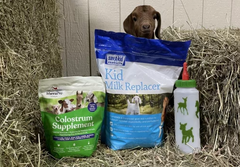
- Colostrum replacer
- Bottle & nipples
- Oral feeder for tubing newborns that won’t suckle
- Thermometer and antibiotics is helpful to have on hand for the weeks following birth
- Milk Replacer if newborns are abandoned or need supplementation
- Weigh tape or scales for birth weight
- Vaccinations if part of your health plan
- Tags, tattoo equipment, etc for identification of newborns
- Phone number of your vet with you during checks if emergency assistance is needed
- Nonessential, but helpful supplies for the more experienced person include a stethoscope to listen to newborn heartbeats, epinephrine for weak or unresponsive newborns; oxytocin, calcium and dextrose for IV in weak mothers with prolonged labor; IV kit, oral drenching equipment, syringes and needles can keep vet calls down and provide immediate assistance.
5. Assistance During Birth:
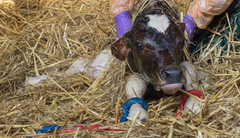
-
Be prepared to assist during the birthing process if needed. Spending time in close contact and frequently handling pregnant livestock well before their due date helps them be more comfortable, allowing you to assist delivery if needed. Nothing is more frustrating than having to pull a baby and having the mother jump up every time you approach the birthing pen. This prolongs labor and is risky for the baby.
-
Know the signs of complications and call your vet before a situation turns dire. Even when you make all the right preparations and take precautions to have delivery go well, be prepared for complications and poor outcomes. Sometimes even when you do all you can, you can’t save a newborn and being emotionally prepared for difficult outcomes will help children growing up on the farm have a realistic view of nature, the cycle of life, and the commitment it takes to raise livestock. Know and plan for a proper way to dispose of mortalities.
-
First-time labors can be longer, but no progress in several hours warrants an internal check for stage of dilation, a normal position, and a live baby. Use gloves and soap or disinfectant for internal checks.
-
Breech or backward newborns should not stay in the birth canal long. They will have more fluid in their lungs and the umbilical cord will be compressed longer robbing them of oxygen. If it appears back feet are presenting or you can feel a tail upon an internal check, be prepared to pull the baby out promptly, ensure fluid is cleared and they start breathing immediately. Tickling them with a piece of straw inserted in the nostril will trigger a snort or cough helping to clear the lungs. Positioning them on their chest with their back legs splayed like a frog and their front legs tucked underneath to keep them upright allows easier breathing. Hanging a newborn upside down or draping a calf over the cow and rubbing the sides of the ribcage helps drain fluid from the lungs in breech births if a lot of fluid is present. Forcing air into the nostrils of a newborn that won’t take a breath can help them get started and there are some resuscitators on the market for this. An epinephrine injection in the tongue for non-existent or weak heartbeats and breathing could be a last-resort measure for an unresponsive newborn too.
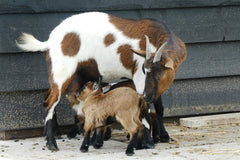 6. Immediate Care:
6. Immediate Care:
-
Once you are sure the newborn is breathing adequately, if the mother allows your close presence without standing up, scooch the baby toward her head so she can clean the newborn. Amniotic fluid has prostaglandins in it which are a natural pain reliever, so it is very beneficial for the mother to lick the baby. She will be more comfortable after delivery which helps her relax to pass the placenta and also let down colostrum and come into milk production. Licking will also stimulate circulation and breathing of the newborn which helps get them dry and warm faster. If the mother shows no interest in the newborn, rub the baby firmly with a clean towel to simulate a mother licking them and get them dry and warm quickly.
-
Ensure the mother passes the placenta. Retained placentas can cause infections that prevent them from healing, producing enough milk, and breeding back. Remove the placenta from the pen once passed. Their instinct is to consume the placenta to deter predators, however, this can lead to digestive complications. Offering the mother warm water as soon as possible after birth is one of the best ways to help her pass the placenta quickly. A cow will drink 6-10 gallons of room-temperature water after delivery if offered in buckets. An IM injection of oxytocin can also stimulate uterine contractions to help the placenta pass if the mother won't drink and is not passing the placenta soon after delivery.
-
Provide high-quality, palatable forage and feed to the new mother. Getting her to eat soon after drinking and cleaning the newborn will help her stay healthy and come into milk sooner.
-
Ensure that the newborns receive colostrum (first milk) within the first few hours of birth. The sooner colostrum is in them, the higher their absorption of protective antibodies will be which aids in preventing infections.
-
Ensure the newborn passes the meconium. The first bowel movement is usually dark and sticky. On rare occasions, meconium can get blocked requiring an enema to clear.
-
Check for proper bonding between mother and offspring and ensure they are off to a strong start before introducing them to herd dynamics. If a new mother is reluctant to accept the newborn, try tying her head.
-
Weigh, identify and update the records promptly.
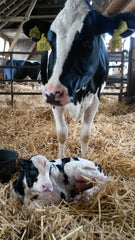
7. Shelter and Protection:
-
Provide adequate shelter to protect youngstock from adverse weather conditions.
-
Implement biosecurity measures to prevent the spread of diseases before integrating them back into a group situation.
8. Health Checks and Vaccinations:
-
Consult with a veterinarian to develop a proper health plan for pregnant animals before breeding.
-
Schedule health checks for both mothers and newborns.
-
Follow a vaccination schedule recommended by your veterinarian.
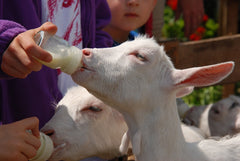
9. Nutrition for Newborns
-
Supplement the diet of newborns with additional nutrition if necessary.
-
Supplemental milk or creep feed may be beneficial for small, weak or multiple birth offspring or babies of first-time mothers.
-
Monitor weight gain and adjust feeding practices accordingly.
-
Have a plan for getting youngstock gradually switched to feed before weaning.
-
Ask our livestock nutritionist to help develop a feed transition plan for optimal growth depending on goals. Show animals will require a different plane of nutrition to maximize early growth than commercial livestock.
Preparing for calving, lambing, kidding or farrowing season requires planning, attention to detail, and a commitment to ensuring the well-being of both mothers and babies. By following these guidelines and establishing a good relationship with your herd or flock nutritionist and veterinarian you can create a nurturing environment that sets the stage for healthy and thriving livestock on your farm. The arrival of new life is a celebration of the cyclical nature of farm life and the ongoing legacy of your agricultural endeavors.
